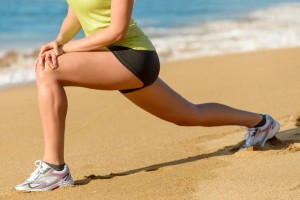Posted on September 08, 2016 by Jenny Cromack
Whilst much emphasis is placed on nutrition and training related interventions in achieving your goals, it could be argued that enhancing recovery strategies is just as important. Improving post workout recovery may facilitate greater volumes of training, increased frequency, or simply higher quality movement during regular training. So how can we increase the speed at which you can recover between sessions?
Firstly you must be getting adequate sleep and eating an appropriate diet. Get these two factors ticked off and we can then separate recovery into two broad sections. Section 1 involves daily regeneration/ mobilisation sessions, section 2 involves specific recovery strategies.
Below we look at some top tips for post workout recovery.
Section 1. Morning Recovery Tips
Whilst some strategies remain controversial, there have been positive findings from interventions such as foam rolling, and dynamic stretching. Daily foam rolling, around 15 minutes in the morning, can help to maintain mobility levels, increase blood flow and help reduce swelling. All valuable in the fight for adequate post workout recovery. An example morning recovery session could look like this.
- A1. Foam roll
- Hamstrings 60s each
- Quads 60s each
- Gluteus 60s each
- Calves 45s each
- Back 60s
- Lats 60s each side
- A2. Dynamic Stretching/ mobilisation
- Leg Swings 30s each
- Inch Worms 30s
- Spidermans 60s
- Arm Circles 60s
- Spinal rotation 60s
Section 2. General Recovery Tips
Whilst simply sleeping well, staying hydrated, and eating well are the fundamentals of recovery, other strategies can be employed to some effect, have a look through the list below and play around with some.
- Ice Baths- warning, these may blunt adaptations, the research is mixed, so if improving fitness variables is the aim, this might be one to dodge. If you’re maintaining fitness and looking to get through a heavy race period, or play team sports these could be a good strategy.
- Compression garments- don’t wear these for anything but recovery, they must be tight.
- Elevating legs for extended periods (3-5mins) if you’re a runner or cyclist.
- Light exercise (working around 55 HR max) up to 20minutes. This is generally best completed in an unloaded fashion, bikes or cross trainers work well.
- More foam rolling!
- Swimming- excellent unloaded mobilisation
- Underwater stretching- there has been some research to suggest that the pressure of the water may assist in recovery.
- Tart cherry juice
- Massage
So there you have it, some little tips that may help you with your post workout recovery and in your quest to improve your training frequency and quality.


